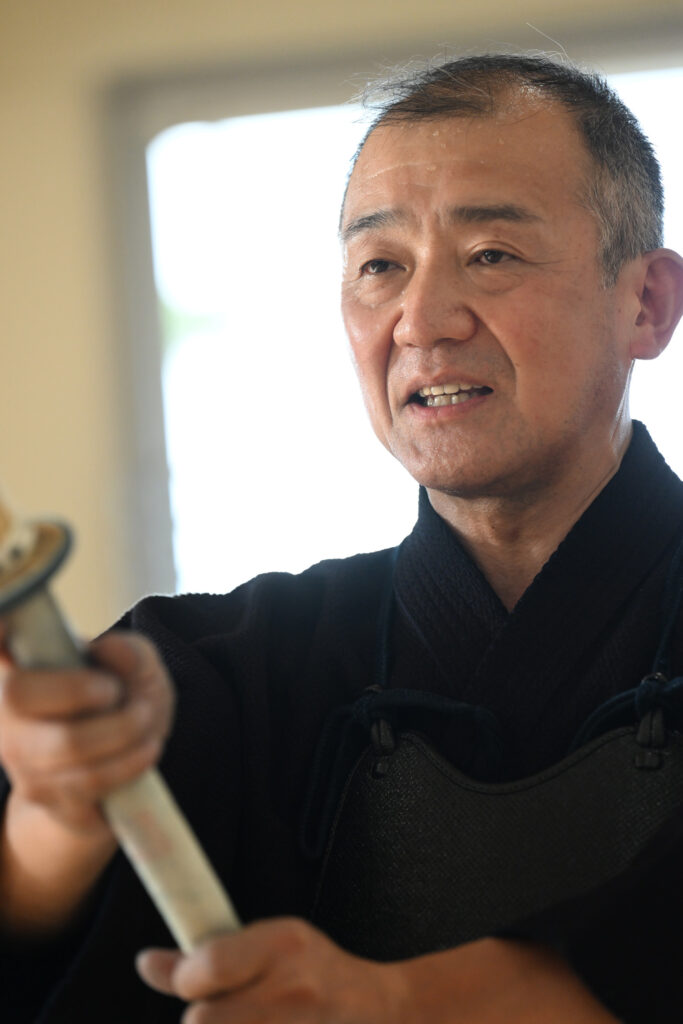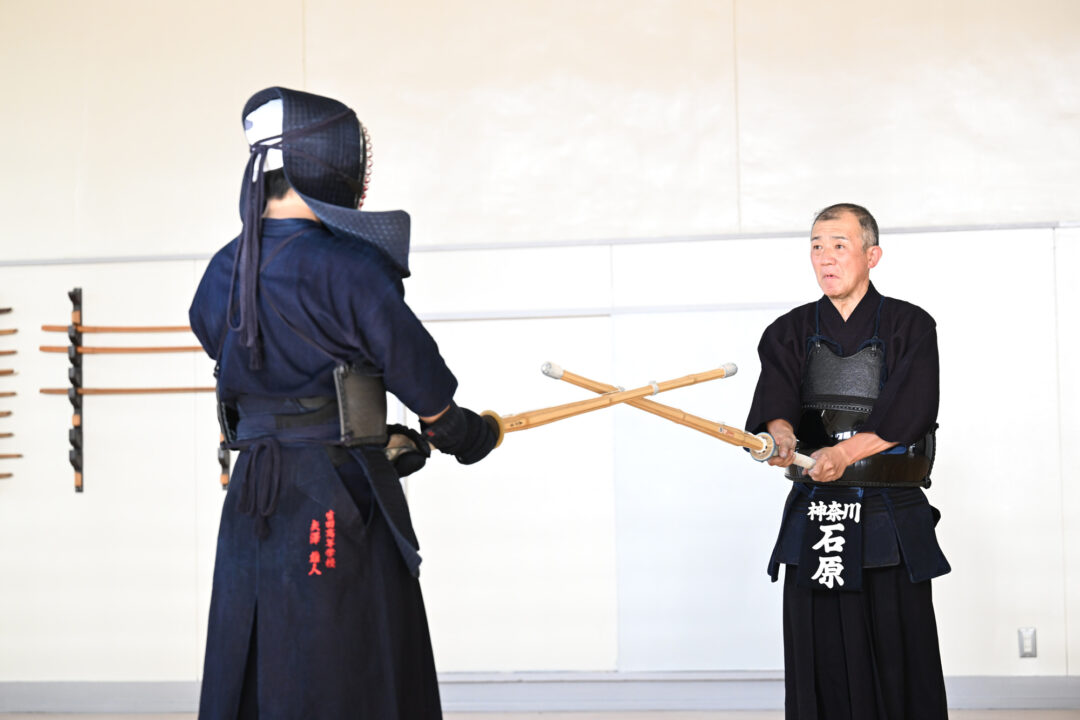2022.9 KENDOJIDAI
The most undesirable thing in Kendo is to use unnecessary force.
Ishihara-kyoshi, who teaches high school students in Kanagawa prefecture, explains how to make Keiko effective practice for Tenouchi and the role of nervousness in Kendo. Through Keiko we can improve issues with straining and tension.
Ishihara Kazuhiko (Tokyo, 1961)

When I was in university, I would ask my Sensei to do Kirikaeshi with me after training when I was at my most tired. The fatigue removed the tension in my body and I could move my shoulders, elbows and wrists smoothly. My Sensei would also tell us that the final Men strike after Kirikaeshi will go well. In today’s Keiko, there aren’t many opportunities to push yourself to your physical and mental limit.
However, there are many opportunities to study the application of force outside of Kendo. If you grip a golf club too tightly, you will hit the ball too hard and it will go flying past its goal. In traditional Japanese character writing, you need to control and adjust the amount of force you put on the brush to make straight, stopped or curved strokes. In the kitchen, chefs need to use tools like sushi knives and woks with precise control to create delicious dishes.
The spirit plays an important role in Kendo and it can affect how well we do in Keiko and Shiai. A Kenshi can do well in Keiko, but feel nervous for Shiai which can have a negative impact on their performance. When you are in a calm state where you can respond to every event, even surprising ones, you will be able to perform well. Using a personal anecdote, I was pushed over by my opponent during my Hachi-dan exam. However, I remained calm, dealt with the situation and kept going, passing the exam in the end.
Shiai and exams are stressful for a Kenshi, no matter how good or experienced they are. It can be intimidating, for example if you know your next opponent is from a strong club or if they look very fit. You can also experience pressure from those around you to perform your best, or become distracted by other negative thoughts; if you weren’t feeling well the day before, you may start worrying about your health during the event. This negativity prevents you from building the energy and confidence required for Shiai and exams. However, if your body and mind are moving as one, you will be able to perform relaxed techniques at the right time even if you are not at peak confidence.
There are several ways to practice controlling how much strength you use in Kendo. Exercises that require correct use of Tenouchi, Suburi, Uchikomi, physical training and so on will strengthen your body and stabilize your core. This prevents strain in your movements.
Mentally, you can train yourself by practicing Keiko recalling the nervousness you typically feel before an exam. It is important to approach Renshu-jiai or Tachiai-geiko like you would a real Shiai or Shinsa. This includes taking the third-person perspective of your Kendo into account; what would a Shinpan see, where would they be standing?
We spend hours doing Keiko every day, but our time spent in Shiai and Shinsai experiencing what we practice for is limited. We should practice hard every day for the fleeting moments that require us to focus and use our power without hesitation. In both Shiai and Keiko, we should be focused on recognizing what is happening, responding in the way that suits you best, and making the situation your own.
Training Tenouchi to decrease tension
The rest of this article is only available for Kendo Jidai International subscribers!


